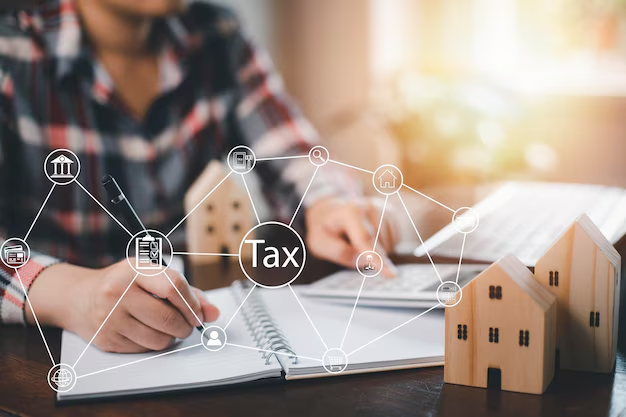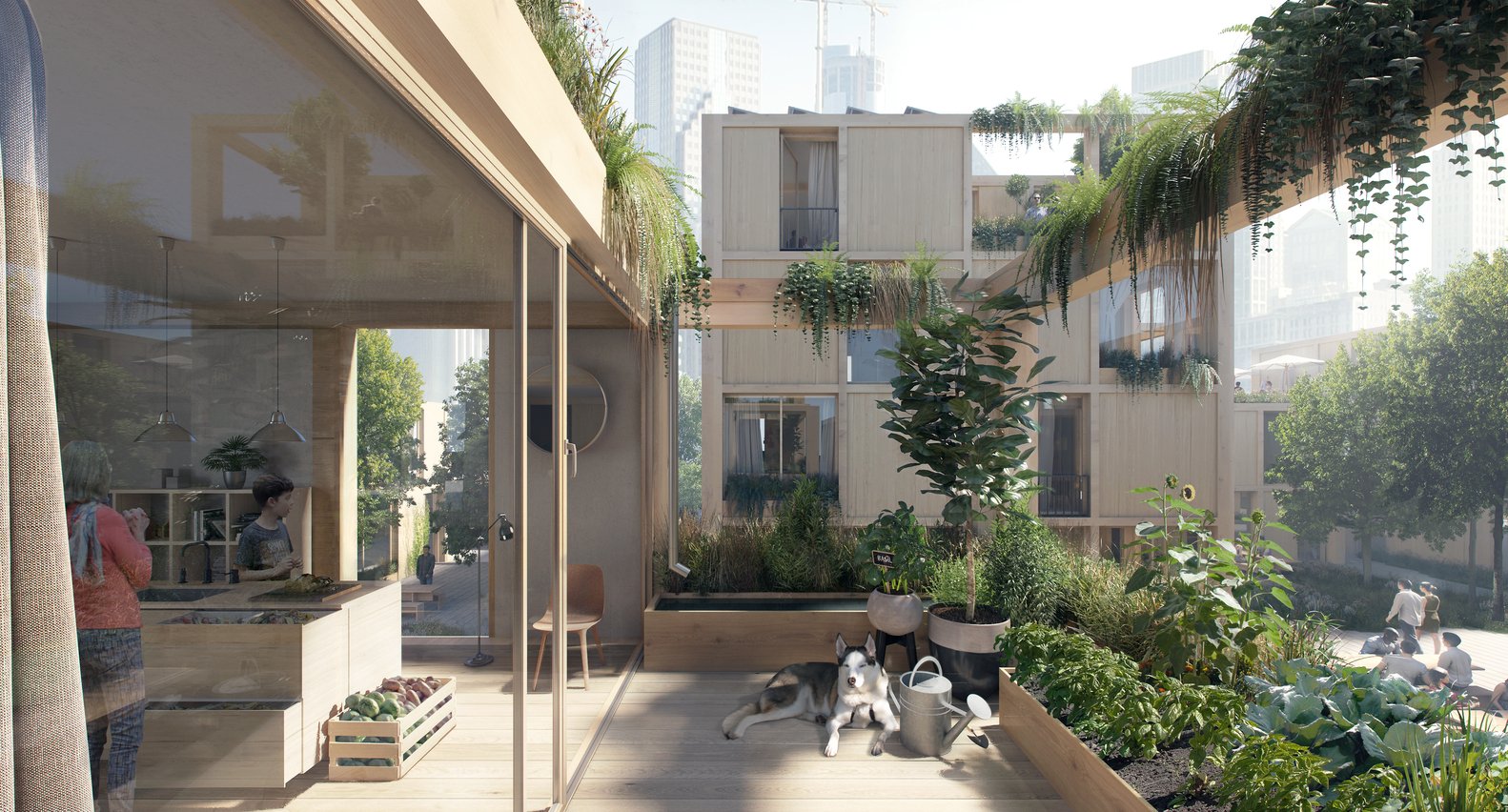In recent years, the concept of sustainable housing has gained significant traction in the United States. As awareness of climate change, resource depletion, and social equity increases, the demand for environmentally friendly and sustainable housing solutions has surged. This article explores the rise of sustainable housing in the U.S., examining the trends, technologies, and policies that are shaping this transformative movement.
1. Understanding Sustainable Housing
Sustainable housing refers to homes that are designed, built, and operated in ways that minimize their environmental impact while promoting the health and well-being of occupants. Key characteristics of sustainable housing include:
- Energy Efficiency: Homes that utilize energy-efficient materials, appliances, and systems to reduce energy consumption.
- Sustainable Materials: The use of renewable, recycled, or sustainably sourced materials in construction.
- Water Conservation: Strategies to reduce water usage, such as low-flow fixtures and rainwater harvesting.
- Indoor Air Quality: Implementation of systems and materials that enhance indoor air quality, reducing pollutants and allergens.
Sustainable housing not only benefits the environment but also promotes a healthier living space for occupants. As a result, many homeowners are increasingly prioritizing sustainability when choosing or constructing their homes.
2. Factors Driving the Demand for Sustainable Housing
Several factors are contributing to the rise of sustainable housing in the U.S.:
2.1. Climate Change Awareness
Growing awareness of climate change has led many individuals to reconsider their environmental impact. As extreme weather events become more frequent and severe, consumers are seeking ways to reduce their carbon footprints. Sustainable housing is viewed as a vital step in combating climate change, leading to a surge in demand for energy-efficient and environmentally friendly homes.
2.2. Government Incentives and Policies
Federal, state, and local governments are increasingly offering incentives to promote sustainable housing. Tax credits, rebates, and grants encourage homeowners to invest in energy-efficient upgrades, renewable energy sources, and sustainable building practices. Additionally, many jurisdictions have adopted building codes that require or incentivize sustainable practices in construction.
2.3. Economic Considerations
Sustainable housing often leads to lower utility bills and reduced maintenance costs, making it an economically appealing option for many homeowners. As energy prices fluctuate, energy-efficient homes offer stability and savings over time. Furthermore, the long-term financial benefits of sustainable housing can outweigh the initial investment, making it an attractive option for buyers.
2.4. Shifts in Consumer Preferences
The millennial and Gen Z generations are increasingly prioritizing sustainability in their purchasing decisions. These demographic shifts are reshaping the housing market, as younger buyers actively seek homes that align with their values. Sustainable housing is viewed not only as a trend but also as a lifestyle choice that reflects personal ethics and responsibility.
3. Current Trends in Sustainable Housing
The sustainable housing movement has led to several noteworthy trends across the United States. Here, we explore some of the most significant developments in this evolving landscape.
3.1. Net-Zero Energy Homes
Net-zero energy homes are designed to produce as much energy as they consume over the course of a year. This ambitious goal is achieved through a combination of energy-efficient construction practices, renewable energy sources, and smart energy management systems.
- Key Features: Net-zero energy homes often feature high-quality insulation, energy-efficient windows, solar panels, and energy-efficient appliances. Advanced technologies like smart thermostats and energy management systems help homeowners monitor and optimize energy usage.
- Market Growth: The net-zero energy movement has gained traction, with builders and homeowners recognizing the long-term cost savings and environmental benefits associated with these homes.
3.2. Tiny Homes and Alternative Housing Models
The tiny home movement has gained momentum as people seek simpler, more sustainable living options. These compact dwellings prioritize efficiency and sustainability, often incorporating eco-friendly materials and energy-saving features.
- Simplicity and Minimalism: Tiny homes encourage a minimalist lifestyle, reducing consumption and waste. Many tiny home builders focus on sustainable practices, utilizing reclaimed materials and promoting low-impact living.
- Affordability: The lower cost of tiny homes appeals to first-time buyers and those seeking to downsize, making sustainable living accessible to a broader audience.
3.3. Smart Home Technology
Smart home technology plays a crucial role in promoting sustainable housing by enabling homeowners to monitor and control their energy usage more effectively.
- Energy Management Systems: Smart thermostats, lighting systems, and appliances help optimize energy consumption, reducing waste. Homeowners can track their usage patterns and adjust settings for maximum efficiency.
- Integration with Renewable Energy: Many smart homes are equipped with solar panels, allowing homeowners to manage their energy production and consumption in real time.
3.4. Sustainable Urban Development
Sustainable housing is increasingly integrated into broader urban development strategies that prioritize walkability, public transportation, and green spaces.
- Mixed-Use Developments: Developers are creating communities that combine residential, commercial, and recreational spaces, promoting a sense of community while reducing reliance on cars.
- Green Infrastructure: Incorporating green roofs, rain gardens, and permeable paving into urban designs helps manage stormwater, improve air quality, and create more livable environments.
4. Innovative Building Materials and Techniques
Advancements in building materials and techniques are revolutionizing sustainable housing. Here are some of the most promising innovations:
4.1. Recycled and Upcycled Materials
The use of recycled and upcycled materials is becoming increasingly popular in sustainable construction. These materials reduce waste and minimize the demand for new resources.
- Recycled Steel and Wood: Builders are using recycled steel for structural elements and reclaimed wood for flooring and framing. This not only lowers the carbon footprint of construction but also adds character to homes.
- Upcycled Products: Creative reuse of materials, such as turning old shipping containers into homes, offers unique design possibilities while reducing waste.
4.2. Sustainable Insulation Options
Insulation is critical in maintaining energy efficiency. Innovative sustainable insulation materials are emerging, providing effective solutions for reducing energy consumption.
- Cellulose Insulation: Made from recycled paper, cellulose insulation is an environmentally friendly option that offers excellent thermal performance.
- Hempcrete: This bio-composite material made from hemp fibers is gaining attention for its insulation properties and sustainability.
4.3. Green Roofing Systems
Green roofs, which incorporate vegetation, provide numerous environmental benefits while enhancing the aesthetic appeal of buildings.
- Benefits of Green Roofs: They help manage stormwater, improve air quality, and reduce urban heat islands. Additionally, green roofs provide insulation, reducing heating and cooling costs.
- Biodiversity and Urban Agriculture: Many green roofs are designed to support local biodiversity and even serve as urban gardens, promoting food sustainability.
5. The Role of Government and Policy
Government policies and incentives play a crucial role in promoting sustainable housing. Here are some significant initiatives and regulations shaping the landscape:
5.1. Building Codes and Standards
Many states and municipalities have adopted building codes that incorporate sustainability standards, such as the International Green Construction Code (IgCC) and LEED certification.
- LEED Certification: The Leadership in Energy and Environmental Design (LEED) program provides a framework for sustainable building practices. Homes that meet specific criteria can achieve different levels of certification, signaling their sustainability to potential buyers.
- Local Codes: Many cities have enacted their own green building codes, mandating energy efficiency and sustainable practices in new constructions and renovations.
5.2. Financial Incentives
Government incentives, such as tax credits and rebates, encourage homeowners to invest in sustainable practices.
- Renewable Energy Tax Credits: The federal government offers tax credits for homeowners who install solar panels and other renewable energy systems, significantly reducing upfront costs.
- State-Level Programs: Many states provide additional incentives for energy-efficient upgrades, such as low-interest loans or grants for energy audits and improvements.
5.3. Funding for Research and Development
Federal and state governments are investing in research and development to promote innovation in sustainable housing.
- Research Grants: Grants for developing new building materials, energy-efficient technologies, and sustainable design practices support the advancement of the industry.
- Public-Private Partnerships: Collaborations between government entities and private organizations foster innovation and facilitate the implementation of sustainable housing projects.
6. Challenges Facing the Sustainable Housing Movement
While the rise of sustainable housing is promising, several challenges remain that may impede its growth:
6.1. High Initial Costs
The upfront costs of sustainable building practices can be a barrier for many homeowners. Although energy-efficient homes often result in long-term savings, the initial investment may deter some buyers.
- Perceived Value: Many consumers may not fully understand the long-term benefits of sustainable housing, leading them to prioritize short-term affordability over sustainable features.
- Financing Options: Limited access to financing for green building projects can also pose a challenge, as some lenders may be unfamiliar with sustainable practices.
6.2. Market Education and Awareness
Lack of awareness about the benefits of sustainable housing can hinder its adoption. Homebuyers, real estate agents, and builders may need more education on the advantages and availability of sustainable options.
- Consumer Education: Raising awareness about the long-term benefits of sustainable housing—such as lower utility bills and improved health—can help drive demand.
- Professional Training: Real estate professionals and builders must be educated on sustainable practices to effectively promote and implement them in the market.
6.3. Regulatory Hurdles
While many regulations support sustainable housing, others may present challenges. Zoning laws and building codes can sometimes be outdated and not conducive to innovative sustainable practices.
- Adapting to Change: As sustainable housing practices evolve, regulations must adapt to allow for new technologies and methods of construction.
- Streamlined Processes: Streamlining permitting processes for sustainable building projects can help reduce barriers to implementation.
7. The Future of Sustainable Housing in the USA
Looking ahead, the future of sustainable housing in the U.S. is bright. Several trends and developments are expected to shape the landscape:
7.1. Increased Adoption of Renewable Energy
As technology advances and costs decrease, the integration of renewable energy sources into residential properties is likely to become more widespread.
- Solar Energy: The use of solar panels will continue to grow, and homeowners will increasingly adopt energy storage solutions, allowing them to utilize renewable energy more effectively.
- Community Solar Projects: Initiatives that allow multiple households to share a single solar installation are gaining popularity, making renewable energy accessible to those who cannot install solar panels on their properties.
7.2. Emphasis on Community and Collaboration
Sustainable housing is increasingly being viewed in the context of community and collaboration.
- Co-Housing Models: Co-housing communities, where individuals share resources and facilities, promote sustainability through shared amenities and reduced resource consumption.
- Community Gardens and Green Spaces: The integration of green spaces and community gardens into residential developments fosters a sense of community while promoting local food production and biodiversity.
7.3. Resilience and Adaptation Strategies
As climate change continues to impact the housing market, resilience will become a critical focus in sustainable housing.
- Adaptive Design: Homes that are designed to withstand extreme weather events, such as floods or hurricanes, will become more prevalent. This may include elevated structures, storm-resistant materials, and improved drainage systems.
- Sustainable Landscaping: The use of native plants and drought-resistant landscaping will help conserve water and promote biodiversity in residential areas.
7.4. Integration of Advanced Technologies
The integration of advanced technologies will continue to enhance the sustainability of housing.
- Smart Cities: As cities become smarter, sustainable housing will increasingly be integrated into urban planning, optimizing energy use, waste management, and transportation.
- Artificial Intelligence: AI technologies can help homeowners optimize energy use, automate systems, and enhance the overall efficiency of sustainable homes.
8. Conclusion
The rise of sustainable housing in the United States reflects a growing commitment to environmental stewardship, social equity, and economic sustainability. As trends, technologies, and policies continue to evolve, the sustainable housing movement is set to reshape the American housing landscape. By prioritizing energy efficiency, sustainable materials, and innovative design, the U.S. can pave the way for a future where homes contribute positively to the environment and the well-being of their occupants.
With ongoing support from government initiatives, market demand, and consumer awareness, sustainable housing will not only become a standard but will also play a vital role in addressing some of the most pressing challenges of our time. As we embrace this transformative movement, the future of housing looks promising—one that harmonizes with nature, fosters community, and promotes a sustainable way of living.



